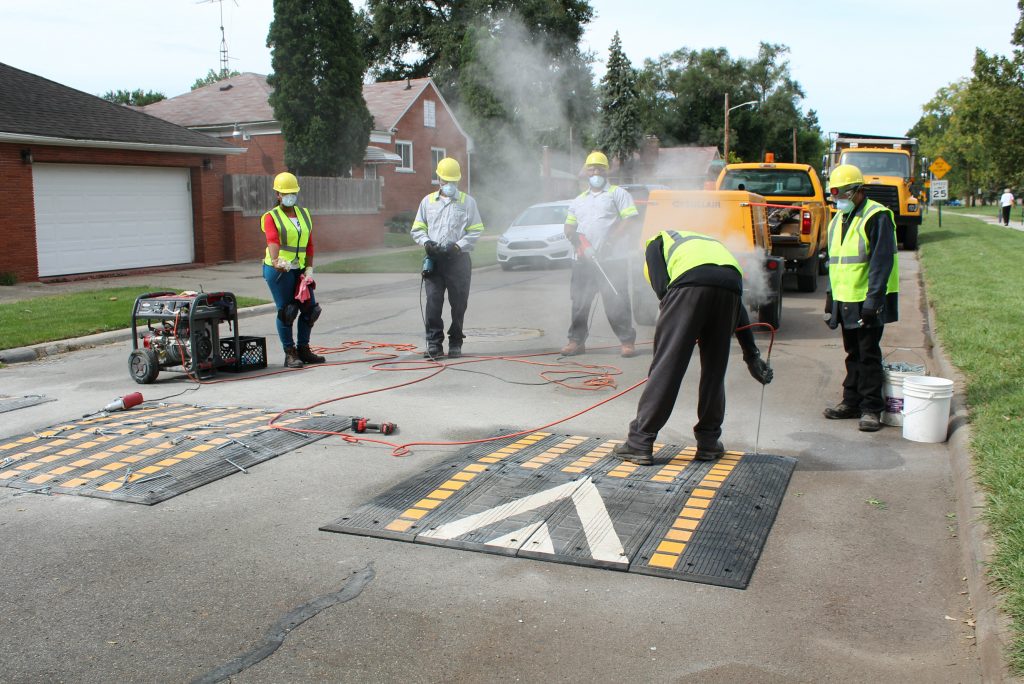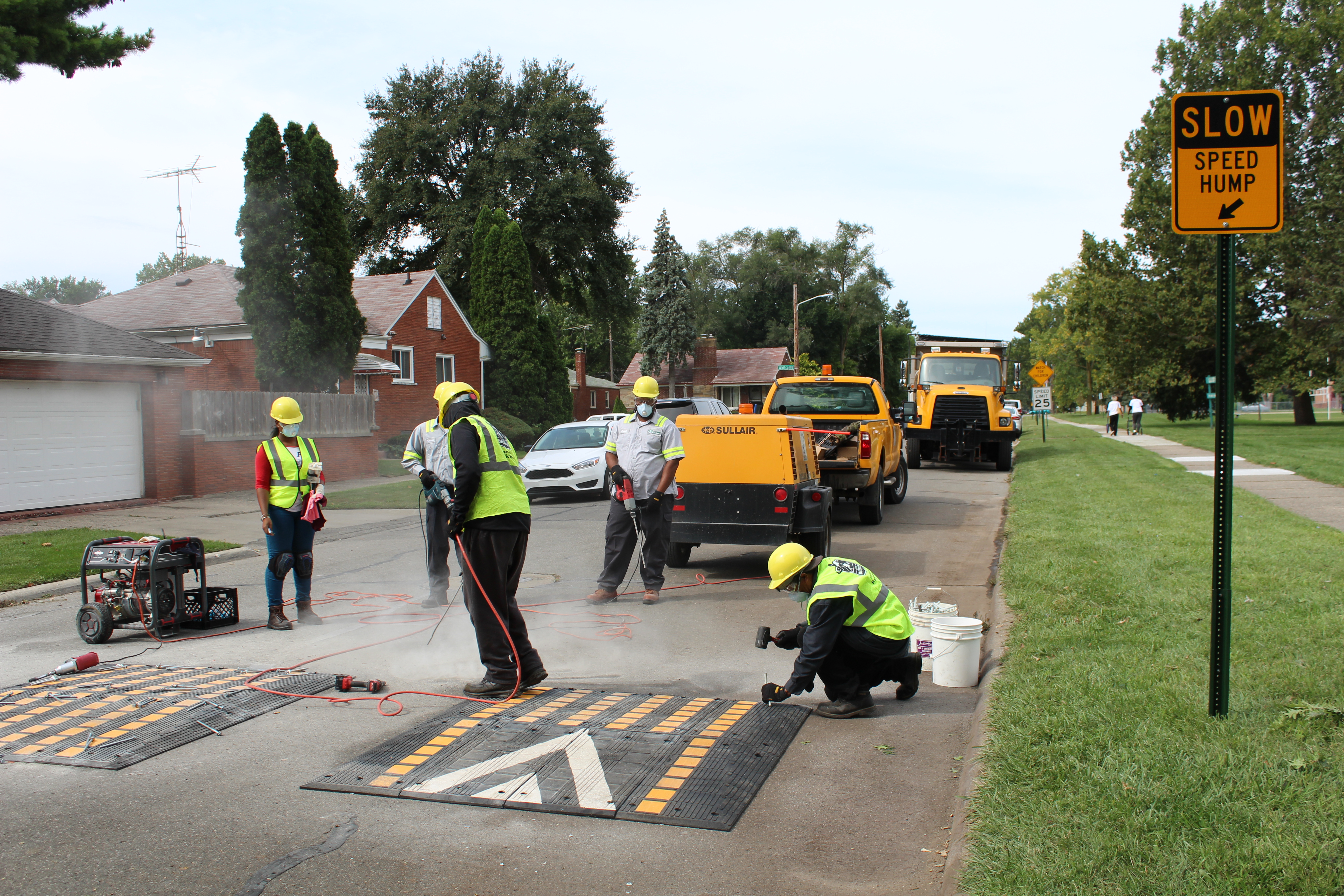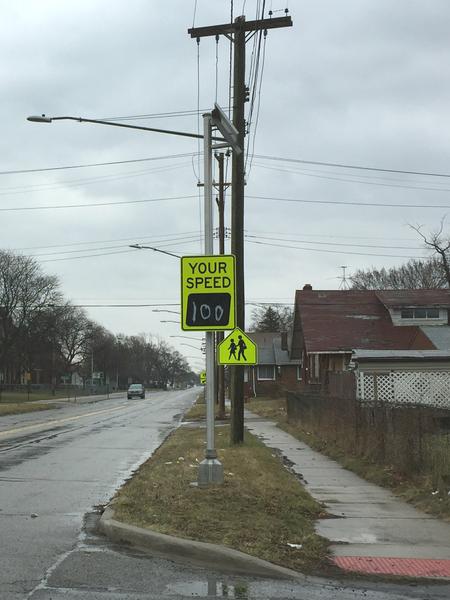Speed Humps Now Allowed on Detroit Streets
Dozens of the traffic-slowing devices are being piloted near parks and schools around the city.

For Detroit residents with problems of drivers speeding down neighborhood streets, a solution is coming.
Earlier this year, WDET reported on one man’s quest for a speed bump on his Northwest Detroit block in the story, What Would it Take to Get a Speed Bump in a Detroit Neighborhood?
At the time, Janet Attarian, the deputy director at the city’s Planning and Development Department, said speed bumps and speed humps were not being used to slow traffic on Detroit streets.
That changed today.

Mayor Mike Duggan announced plans to install speed humps — or more specifically “speed cushions” — around the city as part of a pilot project. These speed humps are like speed bumps but flatter, softer and have gaps between them for emergency vehicles to get through. The ones the city is installing consist of three raised rubber pads drilled into the pavement. They include reflector decals so they are visible at night.
“We’ve been asking for this for years,” said June Mack, a resident living on Whitcomb Street near where one of the first speed humps was installed. “They use Whitcomb like it’s a NASCAR speedway! They leave curly donuts in the street like they’re on a racetrack.”
Mack is hoping that these humps will give dangerous drivers pause before speeding.
“I hope it will tear up some of their cars. When they mess up a hub assembly and they have to get it paid for, they’ll think twice about it,” said Mack.
“They use Whitcomb like it’s a NASCAR speedway! They leave curly donuts in the street like they’re on a racetrack.”
Ron Brundidge, director of Detroit’s Department of Public Works, said roughly 100 speed humps will be installed near parks and schools in all seven of the city’s council districts. Each speed hump will cost about $1,000, Brundidge said, bringing the total estimated sticker price of the pilot project to $100,000. The Mayor said funds will come from the gas tax.
The speed hump pilot project was announced as part of Detroit’s far-reaching Strategic Plan for Transportation, released last week.

“What we’ve seen in a lot of neighborhoods, not only in Detroit but in New York City, is that these neighborhood streets become shortcuts, they become kind of speedways,” said Janette Sadik-Khan , Transportation Principal with Bloomberg Associates and former New York City Transportation Commissioner, who worked on the plan as a consultant. “They threaten the lives of the people that are living, working and playing here and that’s not acceptable.”
Sadik-Khan said getting vehicles to go even 10 mph slower could save lives.
“If you’re hit by a car going 40 miles an hour, there’s a 70 percent chance you’ll die. If you’re hit by a car going 30 miles an hour there’s an 80 percent chance you’ll live. That’s why we have speed limits and that’s why we need speed controls,” she said.
It was recently reported by the Detroit Free Press that Detroit leads large cities in pedestrian deaths.
At a press conference announcing the speed humps, bystanders were already requesting the traffic-calming devices be installed on their blocks.
Mayor Mike Duggan told the crowd, “I’m glad to see so many people happy but I’m going to have complaints on this by next week.” He went on to say, “When you hear one of your neighbors complain I hope you’ll speak up and say, ‘This is something that’s good for the safety of our kids.’”
The city plans to evaluate the impact of the pilot program before deciding whether to install additional speed humps. Officials said if the city decides the pilot was successful then they will lay out a clear process for how residents can request speed humps in their neighborhoods.
Find out more information about the city’s speed hump pilot here.
